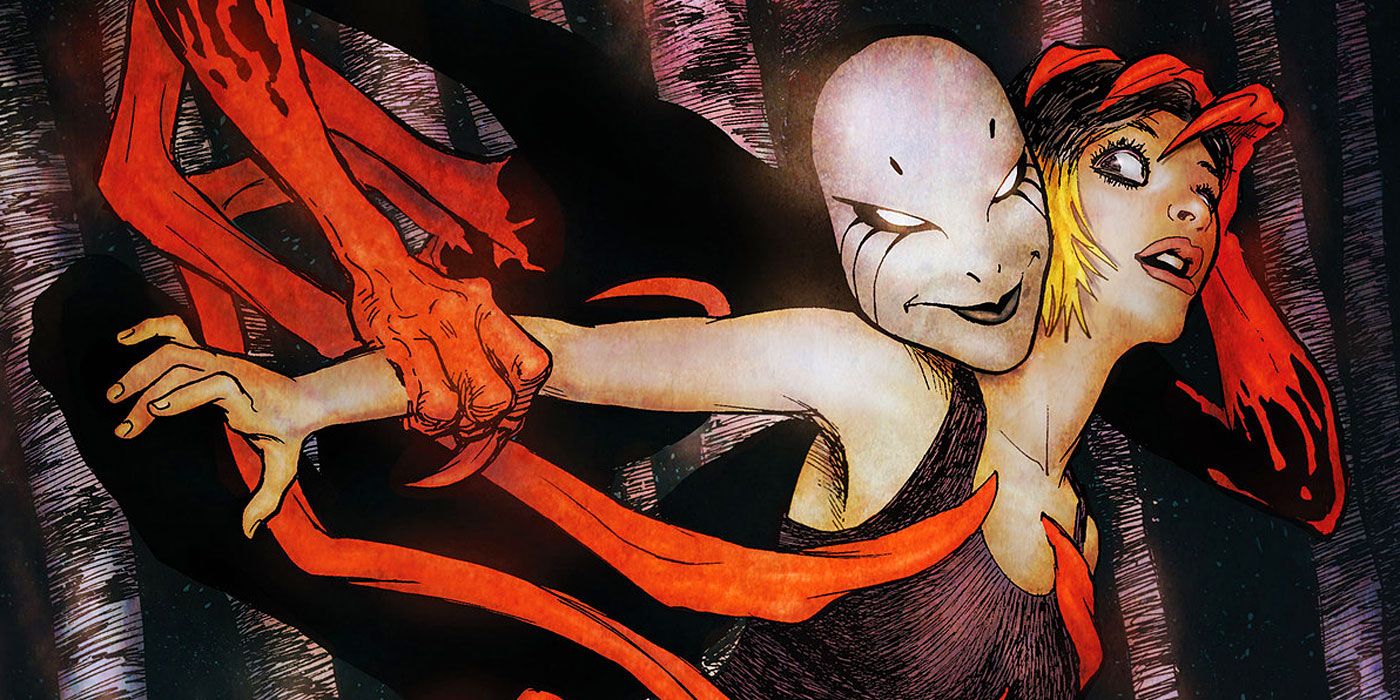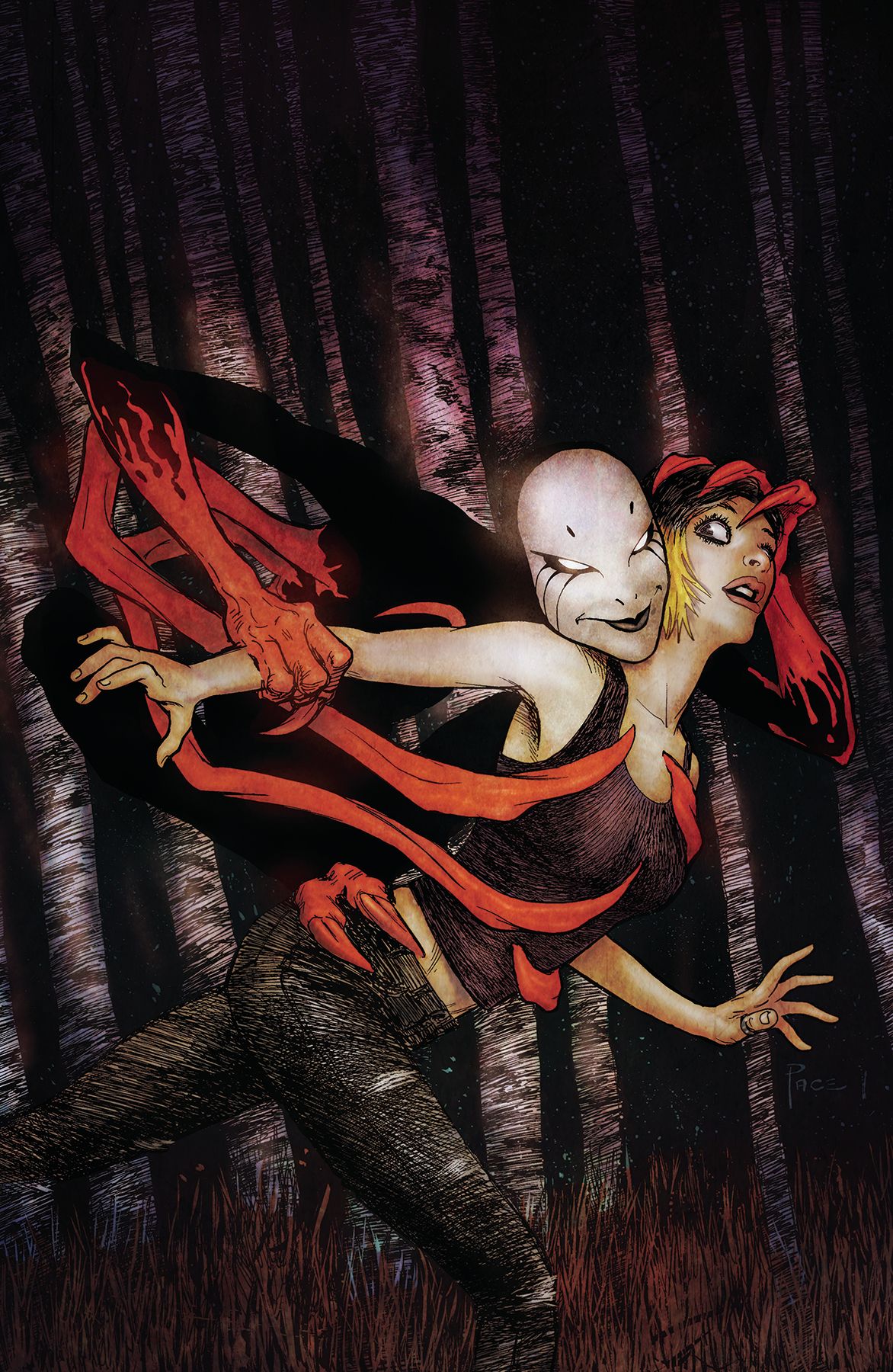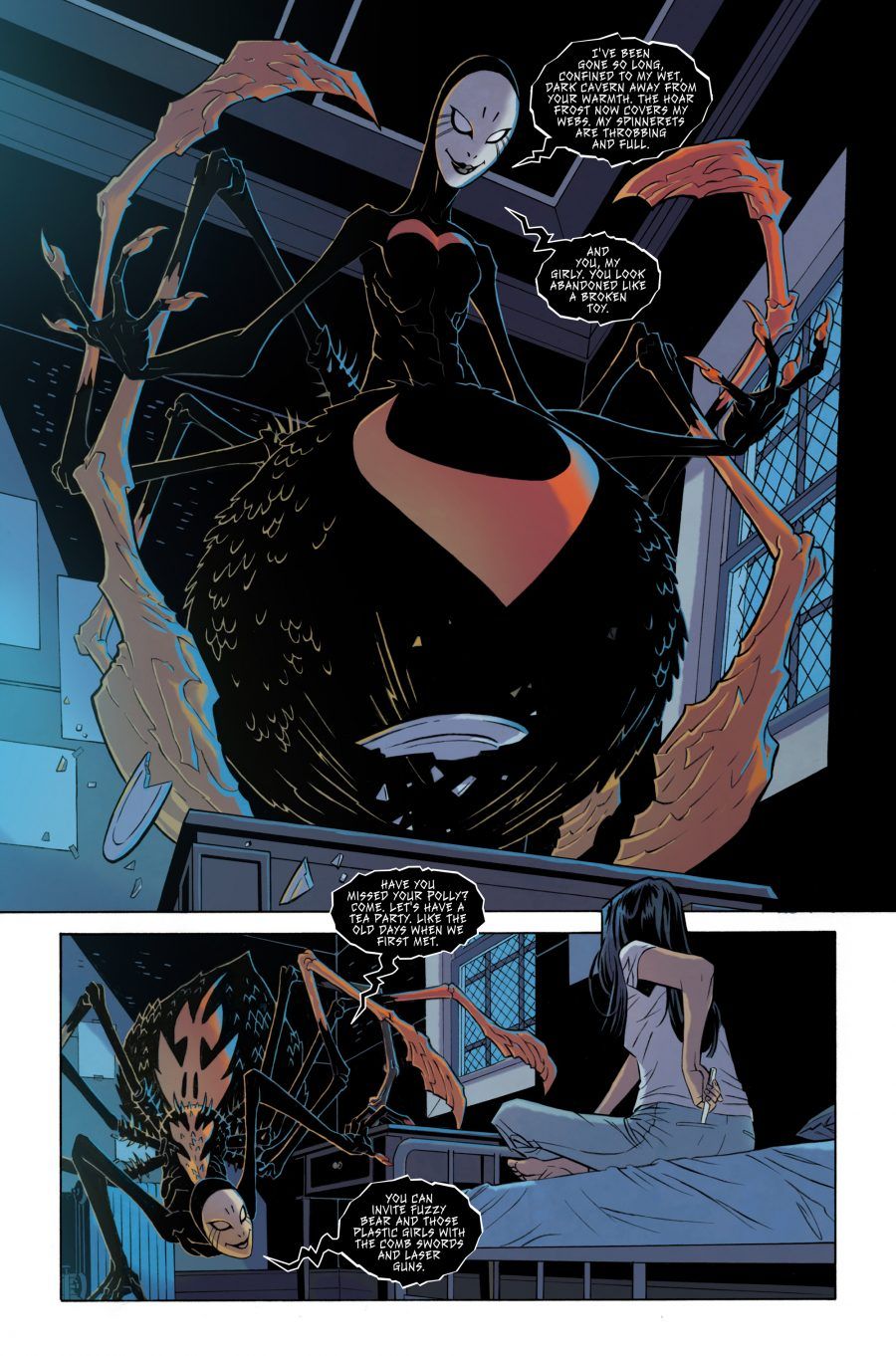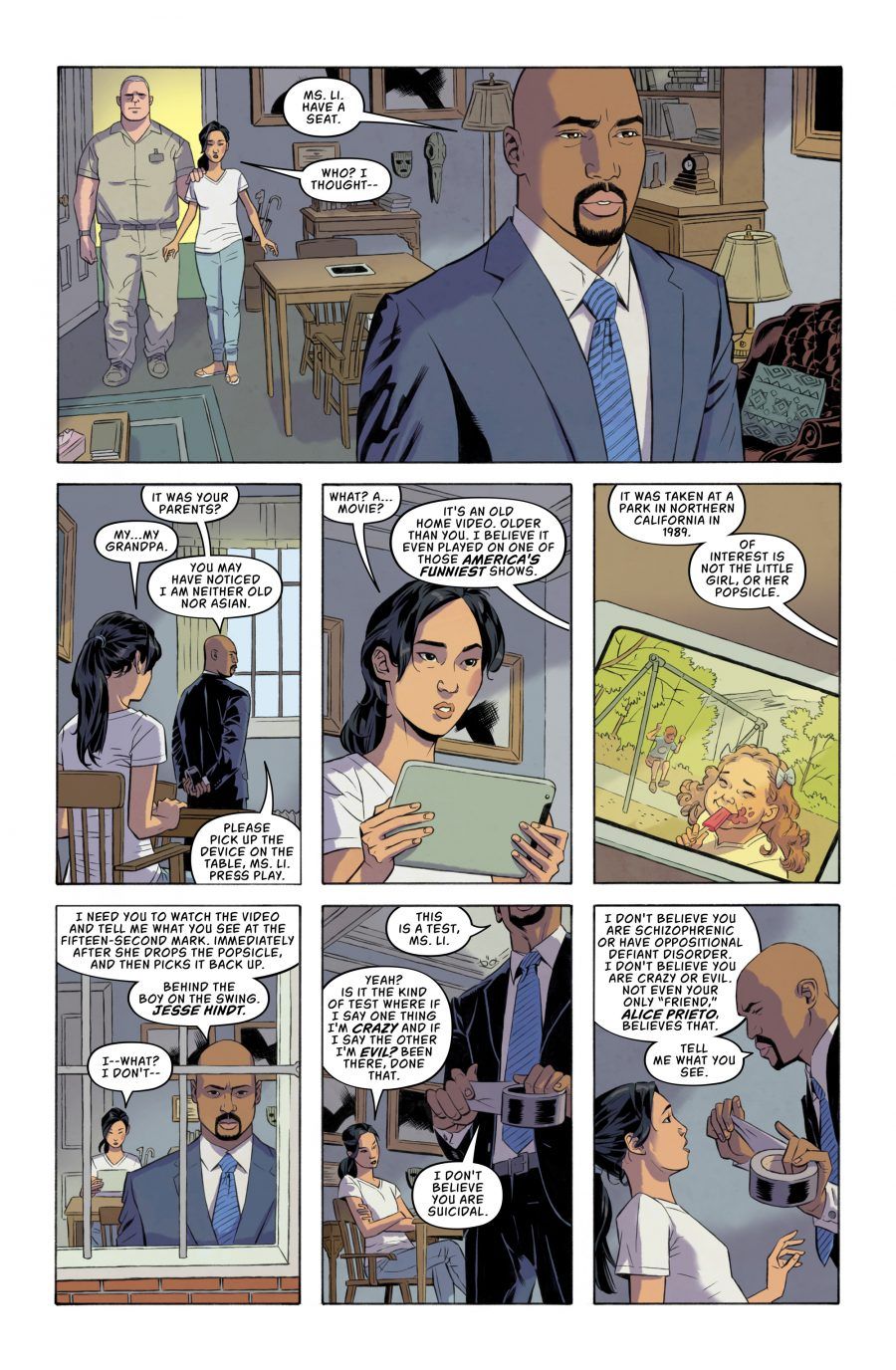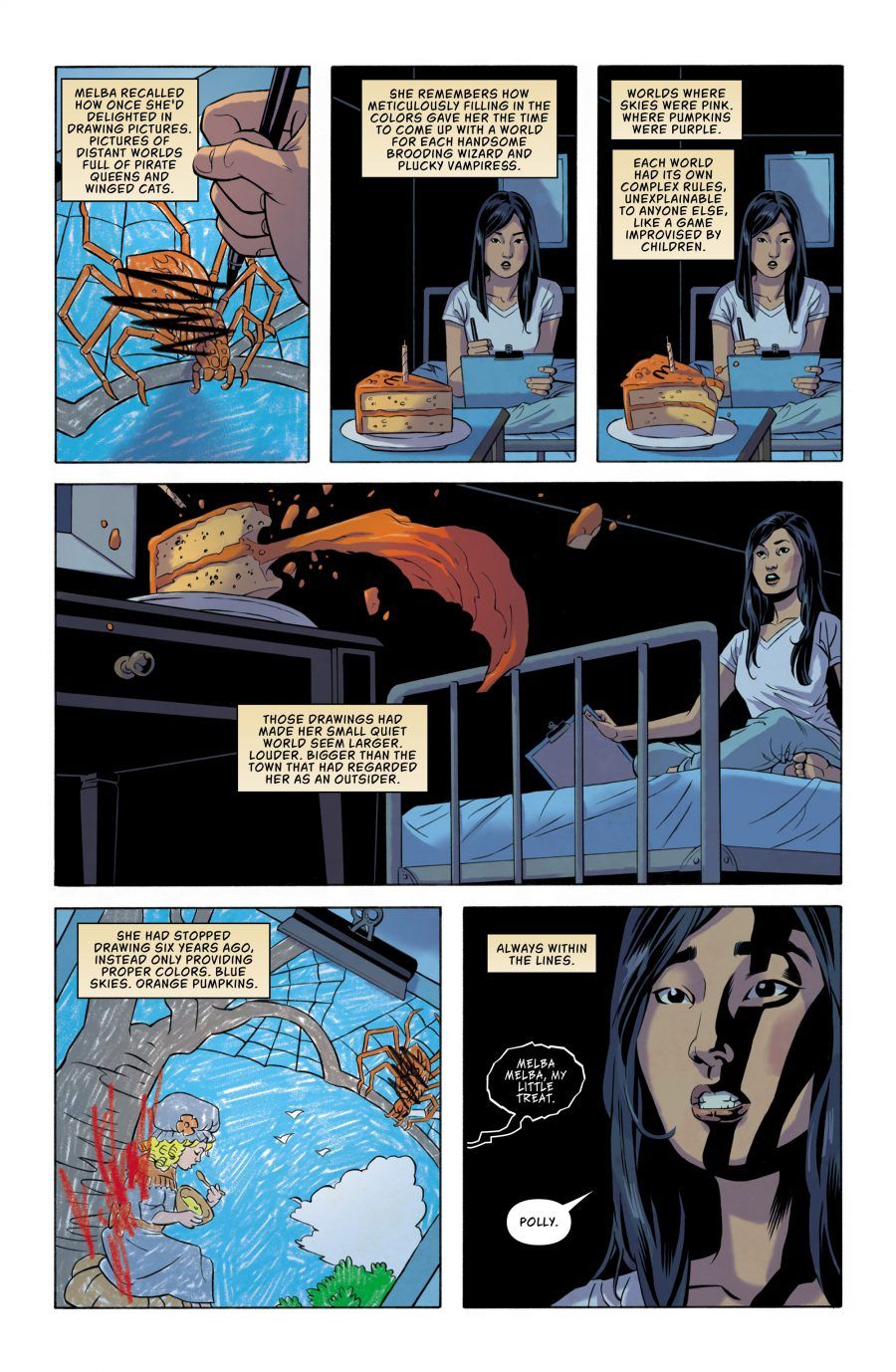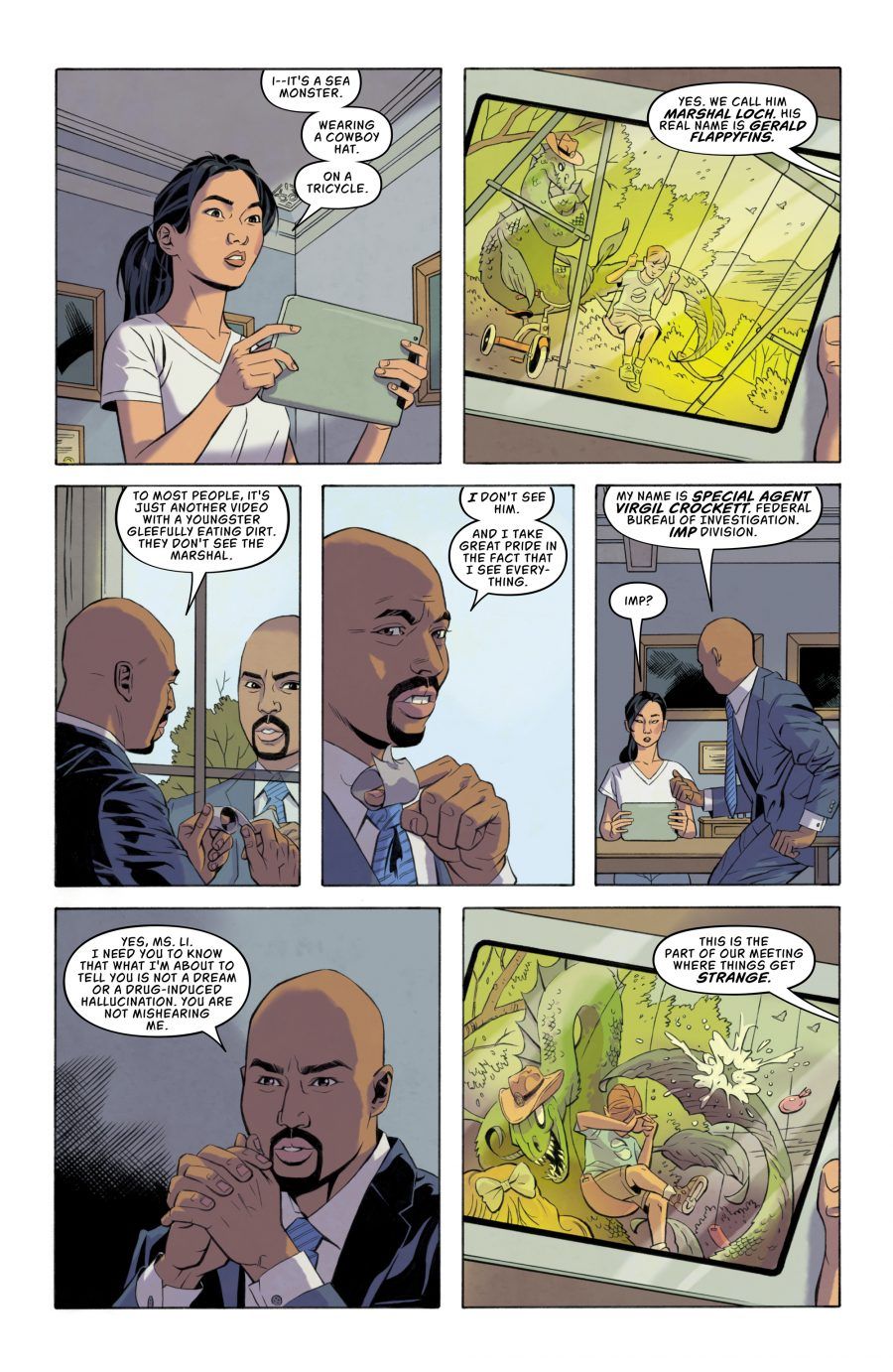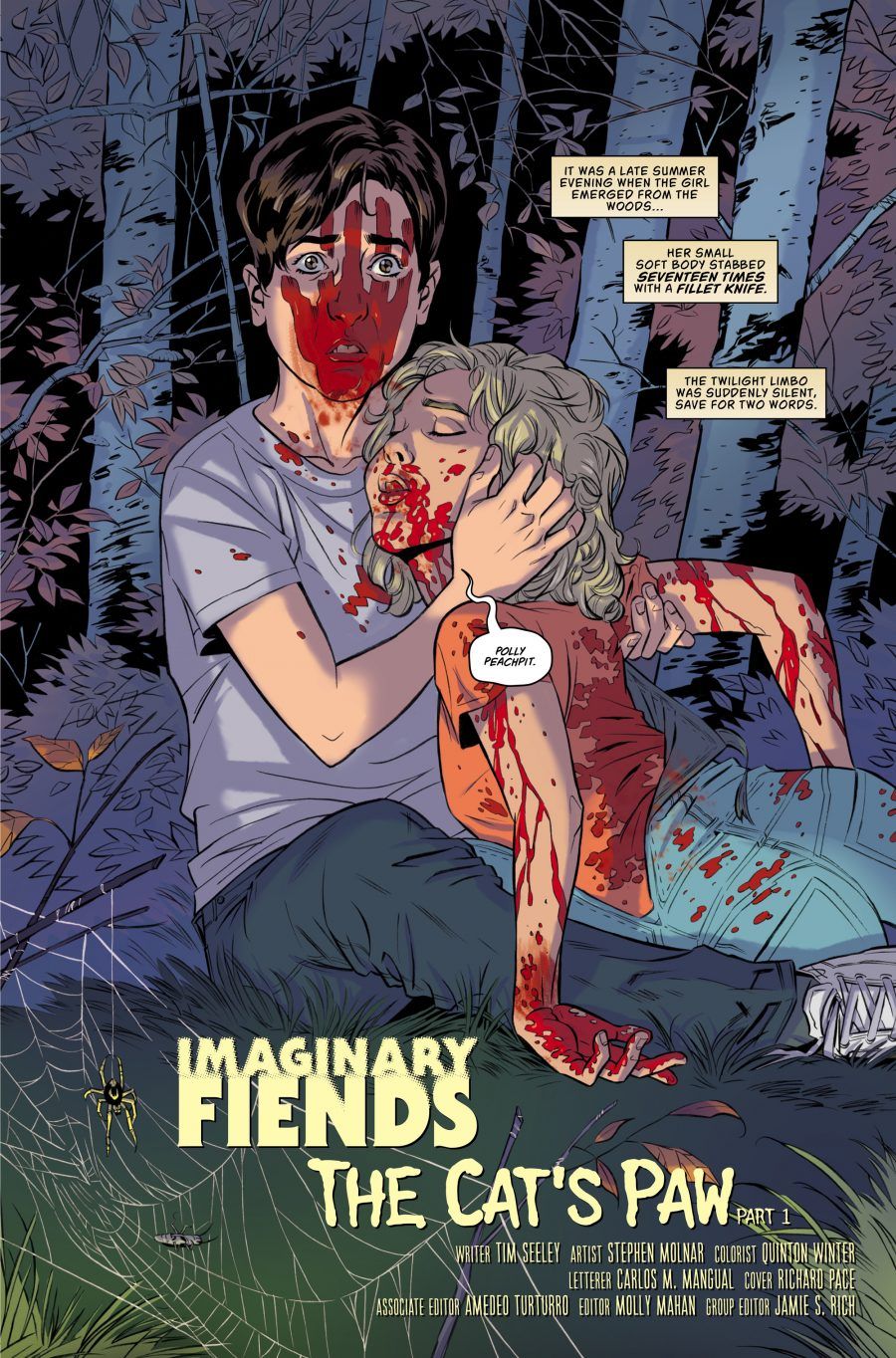SPOILER WARNING: This article contains spoilers for Imaginary Fiends #1, on sale Nov. 15.
Making his mark in comics with successful horror books like Hack/Slash and Revival at Image, Tim Seeley is unleashing his new dark fantasy series Imaginary Fiends this November at Vertigo, alongside artist Stephen Molnar.
No stranger to the DC Comics imprint following his 2015 sci-fi series Effigy, Seeley was also the writer of the DC Rebirth series Nightwing, before moving to Green Lanterns with this month's issue #33. Illustrated by Stephen Molnar, the series is set to debut on Nov. 15.
RELATED: Seeley Returns to Horror with Imaginary Fiends from Vertigo
Seeley told CBR that the high concept for Imaginary Fiends is X-Files meets It, as the story features a young adult who must now team up with her childhood imaginary friend that compelled her to do a terrible thing to her very real friend when she was just a girl. Plus, the first look at interior pages from issue #1, illustrated by Molnar.
Seeley also discussed how his new Vertigo series relates to headline-stealing subject matter like fake news, mental wellness and the Slender Man stabbing trial, and why he lied about his own imaginary friend when he was a young boy growing up in Wisconsin.
CBR: Did you have an imaginary friend growing up as a kid?
Tim Seeley: No, I didn't, and that's kind of why I was inspired to do this series. I felt left out when I was a kid because I didn't have an imaginary friend. But when I was in first or second grade, we had to do these family portrait drawings and draw our whole family, and I didn't just want to draw people so I made up a dinosaur that I just drew in there and when the teacher who it was, I said, "It's my imaginary friend." I completely did it just so I could draw a dinosaur. It was a total cheat. I had an imaginary, imaginary friend. [Laughs] My teacher thought I was so imaginative, but it was all a scam.
I've read the first issue but CBR readers aren't so lucky, so let’s start with the high concept of this series. What was your initial pitch to Vertigo?
The easy, simple pitch is X-Files meets It. A girl and her imaginary friend are tasked with being investigators to find other imaginary friends, who may not be good guys. More broadly, the concept is taking the idea that we live in this world where no one is really sure what's real any more. We have news and we have fake news and we can extrapolate that out to stories of the Slender Man and the attempted murder in Wisconsin. How do people react with the notion that reality is not absolute anymore?
While the high concept of Imaginary Fiends is a child's nightmare, some kids obviously find comfort from imagery friends. And for someone like Melba Li, your main character, there is also comfort when you're a young adult and you learn that you're not crazy, and your childhood imaginary friend was and is real.
That's right. To me, the thing that you see in these scenarios is that a lot of these kids with imaginary friends are afraid of them. But in a weird way, it is comforting for them because it's a fear that they can control. I always thought that was really interesting. I have a niece and nephew that are four-and-a-half, and some of the things that they think of are terrifying. Yet, it seems to be a way for them to learn how to deal with the reality of the world. Even the dark imagination that comes with kids is partially there to help them cope.
You mentioned It and obviously Stranger Things is a massive hit for Netflix. Why do you think it is so entertaining to see children afraid of things that go bump in the night -- because your series Imaginary Fiends also opens with the horror of one child's, specifically Melba's, malicious act?
I think mostly it's because everyone can relate. We've all been kids and we can remember the kind of fear that you could have that was just a different kind of fear than you can have now. When you're an adult, you have to get married and have kids and have a job and pay taxes and be someone, and then there is the realization that one day it will all be over. It's a nihilistic fear. But when you're a kid, you can have big fears about things that you don't fully understand. And what you can imagine they can be is often a much different kind of frightening than reality. Especially now, when we are all sort of feeling like children because we seem to have no control over our destinies, these types of childhood fears seem more appealing.
Mental health is certainly on everyone's mind these days, and schools and parents are certainly more in tune with children's feelings today then even what they were when we were kids. When dealing with mental health in a fictional setting, is it important to get the emotional, feelings and treatments right?
You can't avoid the reality of mental health in the world today. Obviously, in real cases like the ones we are dealing with in Imaginary Fiends, like the kids involved in the Slender Man case, we have to deal with the question of whether or not these people are mentally fit to deal with the crimes that they have committed. And it's something that we have to deal with right away in this book. Everyone thinks this girl [Melba Li] is mentally ill and in some ways, that's the only thing that saves her. She's always going to have to tread this line of is she evil or is she crazy? And that's something that mentally ill people in these types of scenarios constantly have to deal with. Is there maliciousness to what they did, or is there a separation from reality that they can't discern from good and evil. And that's definitely a major plot point throughout this series and a theme that we'll explore. What is perceived and what is imaginary?
And that's Melba's motivation. She needs the organization that recruits her to tell the world that she's not crazy. And that she's not evil. This actually happened to her. And that's what keeps her moving. She has lived in this purgatory with all of these people disconnecting her from the world because they think that she is a malicious person or unstable. She wants to go back to the world with vindication.
I don't want to spoil too much, but your other main character is right there on the cover basically smothering Melba Li and that's her imaginary friend -- or fiend -- Polly Peachpot. Is there something wrong with me if I think she's pretty cool? [Laughs]
[Laughs] No. Polly is my favorite kind of monster. What she does, she does because it's her nature. And she, in her own world, is not evil. She's just doing what she needs to do to survive. Her perception to us is that she is cruel and monstrous and evil, but this is what she does. And as the series goes on, my goal is to make you love her. She's sympathetic in her ways. She has very complicated feelings. She comes from something really foreign to us but to ground her in our world, she picks on these elements that are really childish and simple to give her a story. And I think in the end, it makes her one of the most complex characters that I have written. I hope people like her as much as I do.
Why was Stephen Molnar the right artist for Imaginary Fiends?
I have known him for a lot of years and don't even remember how I met him, but he was always doing lots of licensed books like Star Trek where he had to draw a lot of likenesses of movie stars and he was good at it, he was so clean and perfect, but I always wanted to see him do something where he doesn't have to draw actors. I wanted him to unleash his imagination and I wanted to see him draw gritty and gross and dark, because his style is so clean. Finally, I pitched him on doing this idea and it took three years to get it started, and he's hung on for a long time waiting to draw this and the book totally benefits from it. He's really been able to take that really clean, illustrative style of his and push it to really contrast with the really crazy stuff. He draws these perfect, clean scenes and then he adds a drooling, spider monster to it. It looks great.
You've had great success at Image Comics with your previous horror books Loaded Bible, Hack/Slash and Revival. Why is Vertigo the perfect home for Imaginary Fiends?
I worked on Vertigo before on Effigy and I really like the brand of Vertigo, what it feels like and what the books stand for, but I also felt like I did a Vertigo book and I didn't do a horror book. That's my thing. What was I thinking? [Laughs] It's a perfect Vertigo book. It's horror but it's also dark fantasy. It has a little bit of lyricism that works so well like Neil Gaiman's Sandman. The idea was, at least in mind, to take everything that I love about Vertigo and put it into one comic and put some of myself in there too.
Imaginary Fiends #1 is scheduled for release on Nov. 15.

